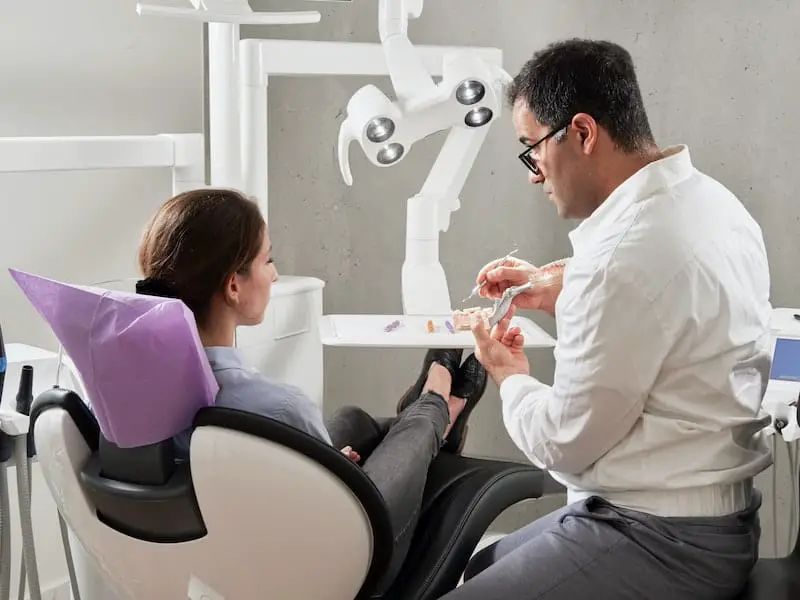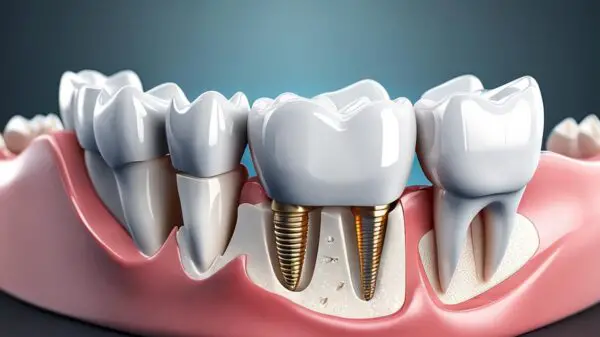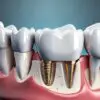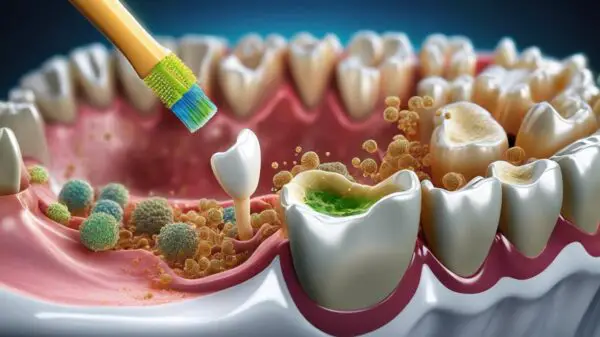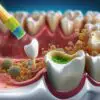What You Need to Know About Bone Grafting for Teeth
Whether you have suffered a severe injury or atrophy to your jawbone due to tooth loss, you may believe that your chances of a beautiful smile are virtually nonexistent. However, this is not the case! Thanks to modern advances in dentistry, dentists can repair your jawbone through a restorative process known as bone grafting. While this procedure sounds quite intense, it is actually rather popular in the world of dentistry.
What is bone grafting for teeth? Bone grafting is the process of using synthetic materials or donor tissue to boost the growth of your jawbone. Once the graft is placed, your natural bone works to create new cells surrounding the graft, encouraging new bone growth. This restorative dentistry procedure provides a firm foundation for dental implants, crowns, or bridges that would not be supported by an individual’s damaged bone.
Although bone grafting may seem like a shocking and new dental procedure, it is actually a relatively minor process. In fact, bone grafting has been used in both medicine and dentistry for well over one hundred years!
In this post, we will take a closer look at the many benefits of bone grafting for teeth. We will also break down the bone grafting procedure to eliminate much of the mystery that surrounds this dental treatment.
What is Bone Grafting for Teeth?
If your jawbone is not dense enough to support dental implants on its own, bone grafting can improve your candidacy. By grafting bone tissue into the jaw, your dentist can boost jawbone growth and provide a firmer foundation for potential implants.
Bone grafting has been used by doctors and dentists for over one hundred years. Contrary to what you may think, bone is actually quite malleable, creating new cells regularly. Because of this, bone grafting is one of the least invasive and most natural ways to encourage the regeneration of otherwise compromised bone structures.
Once the compromised area of the jawbone has healed following the dental bone graft, your dentist can use it as an anchor for dental implants, crowns, or bridges. This is one of the best ways to achieve a beautiful, healthy smile that was previously compromised by decay, disease, or degeneration.
Benefits of Bone Grafting
There are many benefits to bone grafting specific to dentistry. For many individuals, bone atrophy caused by tooth loss can limit restorative treatment options. Through bone grafting, these individuals can once again pursue the smile of their dreams.
Bone Grafting Restores a Compromised Jaw
When jaw atrophy occurs because of tooth loss, bone grafting by your dentist can restore lost tissue, allowing you to receive dental implants. Your dentist also provides bone grafting procedures to restore the jaw following tooth extraction and performs sinus lifts to restore lost bone tissue in the upper jaw. During a consultation, your dentist can create a treatment plan based on your goals and needs.
Bone Grafting Restores Functionality
Even the loss of one tooth can impact an individual’s ability to speak clearly, eat freely, or perform other daily tasks. Following tooth loss or extraction, the bones of the mouth begin to quickly atrophy, creating challenges for the individual.
One of the greatest benefits of bone grafting is that it restores functionality by alleviating jawbone atrophy that creates challenges for the individual. Additionally, through bone grafting, a dentist can help their patient achieve greater self-esteem and confidence.
Bone Grafting After Tooth Extraction
Patients wishing to restore their smiles with dental implants are not the only ones who may require a bone graft. In many cases, when a tooth has become severely decayed, bacteria can also affect the tissues surrounding the tooth, including the bone and gums. A bone graft can replace compromised tissue while simultaneously setting the stage for dental implant placement.
Bone Grafting For Sinus Lifts
When bone atrophy occurs in the upper jaw, it can decrease the amount of bone tissue between the gums and the sinuses. If a patient wishes to receive dental implants, this can make it impossible to place an implant without disrupting the sinuses. A special kind of bone graft called a sinus lift can replace lost tissue after the sinuses have been carefully elevated. Once the graft has healed, the upper jaw can safely accommodate an implant.
Bone Grafting Timeline
Your dentist will take ample time to assess your candidacy before proceeding with a bone graft for dental implants. In general, the best candidates are nonsmokers who are otherwise in good oral health. Smokers should cease the habit for a period before surgery. Ideally, they should stop smoking entirely to experience the best ongoing benefits of the procedure.
Once your dentist has determined that you can safely undergo bone grafting, they will create a custom treatment plan using x-rays and other advanced diagnostic tools. Before surgery begins, you will receive an anesthetic and a sedative in order to help you remain calm and comfortable throughout the procedure.
Bone Grafting Process
Once the preparation is complete, your dental team will proceed with the bone graft. First, an incision is made in the gum tissue. Next, the graft is carefully placed in the recessed area. The graft itself can consist of synthetic material or donor tissue. Once the graft has been placed, your dentist will suture your incisions closed. It will typically take about three months for the graft to integrate with your jaw.
Once the graft has fully healed, you can begin planning your dental implant placement with an oral surgeon. Your dentist will work with your surgeon to provide the necessary prosthodontics (dentures, crowns, or bridges) to complete your treatment once the dental implants are in place.
Recovery Expectations Following a Dental Bone Graft
The severity, location, and complexity of your bone graft will greatly affect your individual recovery time. As with any dental procedure, it is important to consult your dentist on the topic of recovery expectations. However, as you prepare for this restorative dental procedure, there are a few things you can expect for your recovery process.
On average, the recovery period following a dental bone graft is between two weeks and two months. Your personal health and overall wellbeing will influence your body’s ability to heal. During the recovery process, you must follow your dentist’s recommendations for proper care.
After several weeks have passed, your dentist will likely request a follow-up appointment. During this appointment, they will track the progress of your recovery. Most dental bone grafts are done in anticipation of a dental implant. Because of this, you will likely be quite anxious to move on to the next step of the process.
Remember that a full recovery of your bone graft will provide the best foundation for your dental implant, crown, or bridge. Once your dentist is satisfied with the process of your bone graft, they will initiate the next step in your treatment plan. Before you know it, you will have the beautiful smile you have been working towards for so long!
During the recovery process, it is important to prioritize healthy oral care habits such as twice-daily brushing and daily flossing.
Is a Dental Bone Graft Right for Me?
For some individuals, there may be several options available concerning their restorative dentistry procedure. One of the most common alternatives to a bone graft is dentures. This is often ideal for individuals who are experiencing large amounts of bone atrophy. This would seriously complicate a dental bone graft. You can read about other missing teeth options here.
However, for individuals with otherwise healthy teeth and strong bones, a dental bone graft is likely the best alternative! Although it may sound like an intimidating process, it is quite routine and provides astonishing results. If you are considering a dental bone graft for correcting your smile, you must work with a restorative dentist that specializes in this area. In doing so, you will ensure that you receive the best quality care possible.



